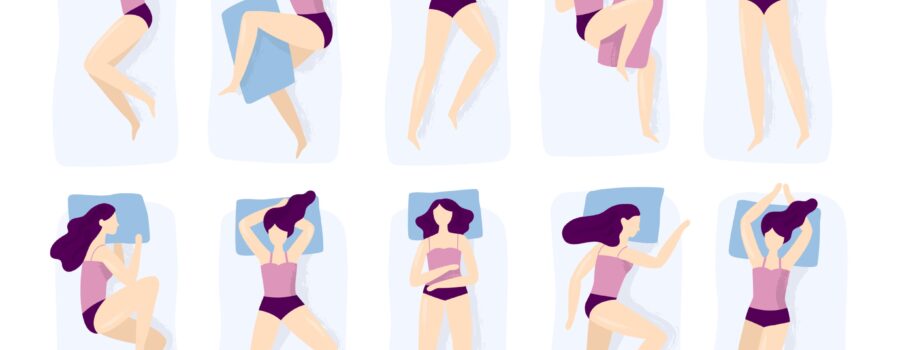Best and Worst Sleeping Positions for Low Back Pain
There is ample evidence to suggest that sleep and pain are related. Good quality sleep is essential to your wellbeing and bodily function, and the health of your spine is no exception. On the flipside, poor spinal health and low back pain can impact quality of sleep. Many who experience low back pain report difficulty sleeping, sharp pains throughout the night, or dull aches during the day.
Fortunately, changing your sleeping position can reduce low back pain and help you get a good night’s sleep. So, which is best for alleviating low back pain? Below are several common sleeping positions, ranked from best to worst:
The Ideal Position: Sleeping on Your Back
The best and most ideal position is sleeping on your back on a medium-firm mattress. Lying flat allows your spine to stay in its natural curve. As a result, this neutral position helps reduce strain on your back and promote pain-free sleep. For optimal alignment, you can also use a bolster pillow beneath your legs to reduce pressure on your low back.
A Suitable Alternative: Sleeping on your Side
Side sleeping is another viable option and alternative to sleeping on your back, though it is important to note there is a correct way to do so. Remember that your top priority should always be alignment. Lying on your side is fine as long as your spine is well supported and there is minimal twisting or misalignment in your shoulders and hips.
Before side-sleeping, be sure that your mattress is supportive enough for your midsection. Sleeping in a side position with a bolster or pillow between your legs also helps reduce pressure on your joints and keep your hips in alignment. Instead of sleeping with your legs bent upwards, also known as the fetal position, keeping your legs straight with a pillow tucked between your knees is optimal.
Note: If twists and turns throughout the day are already taking a toll on your lower back, sleeping with your spine in a twisted position all night may put you out of alignment or even cause the sharp pains or dull aches associated with low back pain. Likewise, if you have chronic hip or shoulder pain, side sleeping may not be the most ideal. Consider sleeping instead.
A No No: Sleeping on your Stomach
Avoiding stomach sleeping is ideal for most sleepers, and especially those with low back pain. This is because the position does not allow support for the low back and rather forces those muscles to support the spine all night, leaving them tired and irritated.
Keep in mind that the worst sleeping positions are the ones that put unnecessary stress on your hips, back, and neck. Using pillows or bolsters to ‘train’ your subconscious not to flip over at night is one trick for kicking the habit and doing your spine a favor!
Summary
If you have difficulty sleeping, experience sharp pains throughout the night, or feel a dull ache in your low back upon waking up, it is a sign it may be time to change your sleeping position. Consider switching to a position recommended above, investing in a firmer mattress and/or pillows and bolsters that support your spine, or consulting with your chiropractor to see about other back pain relief adjustments and strategies.
For more information on sleeping and back pain checkout our other article: Best Mattress For Back Pain

